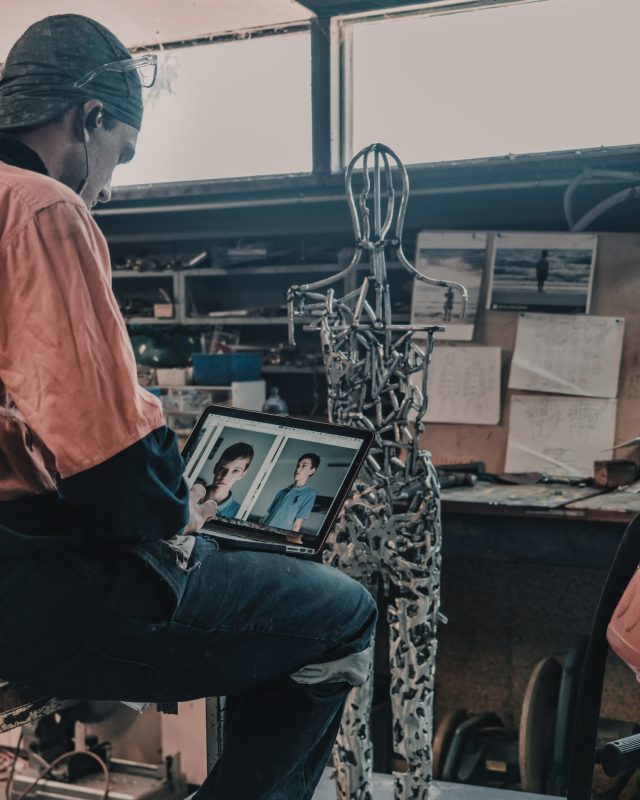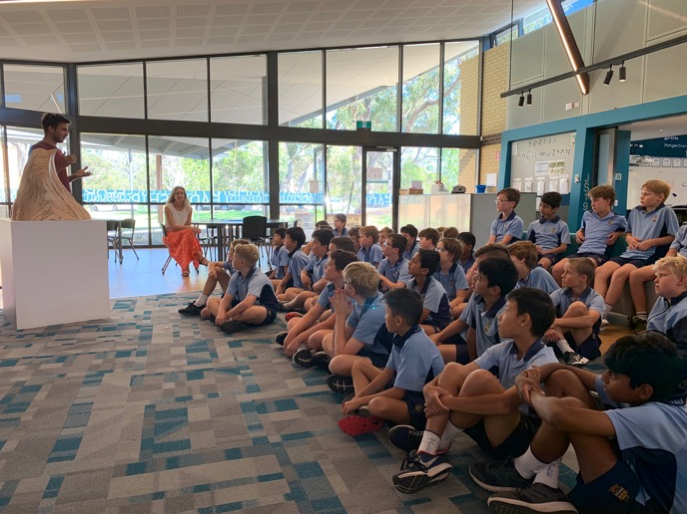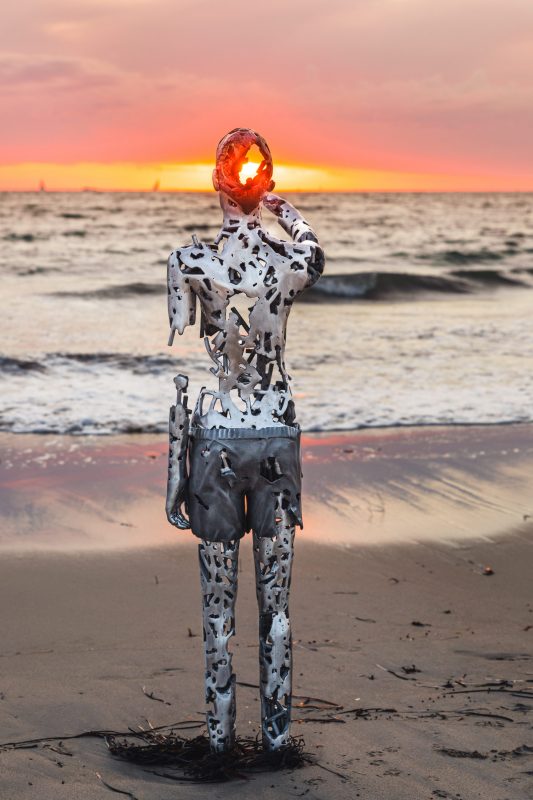As a young and emerging artist and sculptor, Sam Hopkins has a varied background which includes landscaping and design, construction, interior design and woodworking. Though these experiences shaped his interest in sculpture and informed his continued exploration of themes relating to nature and the environmental impacts of climate change and development, his evolving career in art was unexpected.
“If you’d said even five years ago what you would you be doing now, I’d never have said sculptor. Never. It’s just kind of the road I’ve been led down,” he says.
“Through doing those things, I’ve always enjoyed making. And sculpture has really no limits in terms of the making process and the creativity as well. That’s what I love most about it. There are no guidelines or rules particularly that you have to follow. You just make.”

Image courtesy of Artist
Sam’s experience in woodworking and construction provided him with the initial skills for his artistic craft, but he is increasingly self-taught. His enjoyment of sculpture comes from the endless possibilities of the materials and the techniques he is developing. He says the Coronavirus period gave him the opportunity to spend time in his workshop experimenting with new techniques that he has wanted to try for a long time. One of these is hydroforming, a metal forming process that involves injecting pressurised water into Corten steel to blow it up into unpredictable yet very organic shapes that are suitable for indoor or outdoor sculptures.
“It’s different but it’s quite effective. And incredibly strong,” he says. “It’s only a 1 mm sheet which usually you can flop around. Once you expand it out to the shape I could run my car over it and I don’t think I’d dent it.”
Another of Sam’s new works involved experimenting with steam bending and electricity. He used steam to “cook” timber pieces until they were pliable and then curved them into new shapes. Sam then applied electrical probes and used 12000 volts of electricity to burn patterns into the timber pieces. The resulting weblike patterns are entirely unique as each timber reacts differently with the electrical charge following the grain in the timber, finding the path of least resistance. While he says he can adjust the probes and direct the charge a little bit, it “does have a bit of a mind of its own so you’ve got to work with it.” Although he would love to demonstrate the process to the Hale boys, Sam acknowledges that it is “quite cool” but also “amazingly dangerous!”

It is traditional for Hale’s Year 6 class to purchase a parting gift for the Junior School and the 2019 cohort found their gift at last year’s exhibition, choosing Sam’s sculpture En Masse.
Fine Art @ Hale organised for Sam to give a talk to the Year 6 boys where the artist was introduced to Oli Porzig who became the model for his captivating new sculpture Waiting for Hope.
“That was around the time I was designing this work and needed a model to get all my scale right. I don’t know that many younger boys so it just worked out really well,” he says. “His mum was saying how he’s really interested in art and everything so he was very keen to help out. It was a nice little circle.” That nice little circle will be complete when Waiting for Hope is exhibited at Fine Art@Hale this year. It will be one of a few pieces that will be exhibited on campus to engage the school community during the online exhibition from August 7 – September 6.



